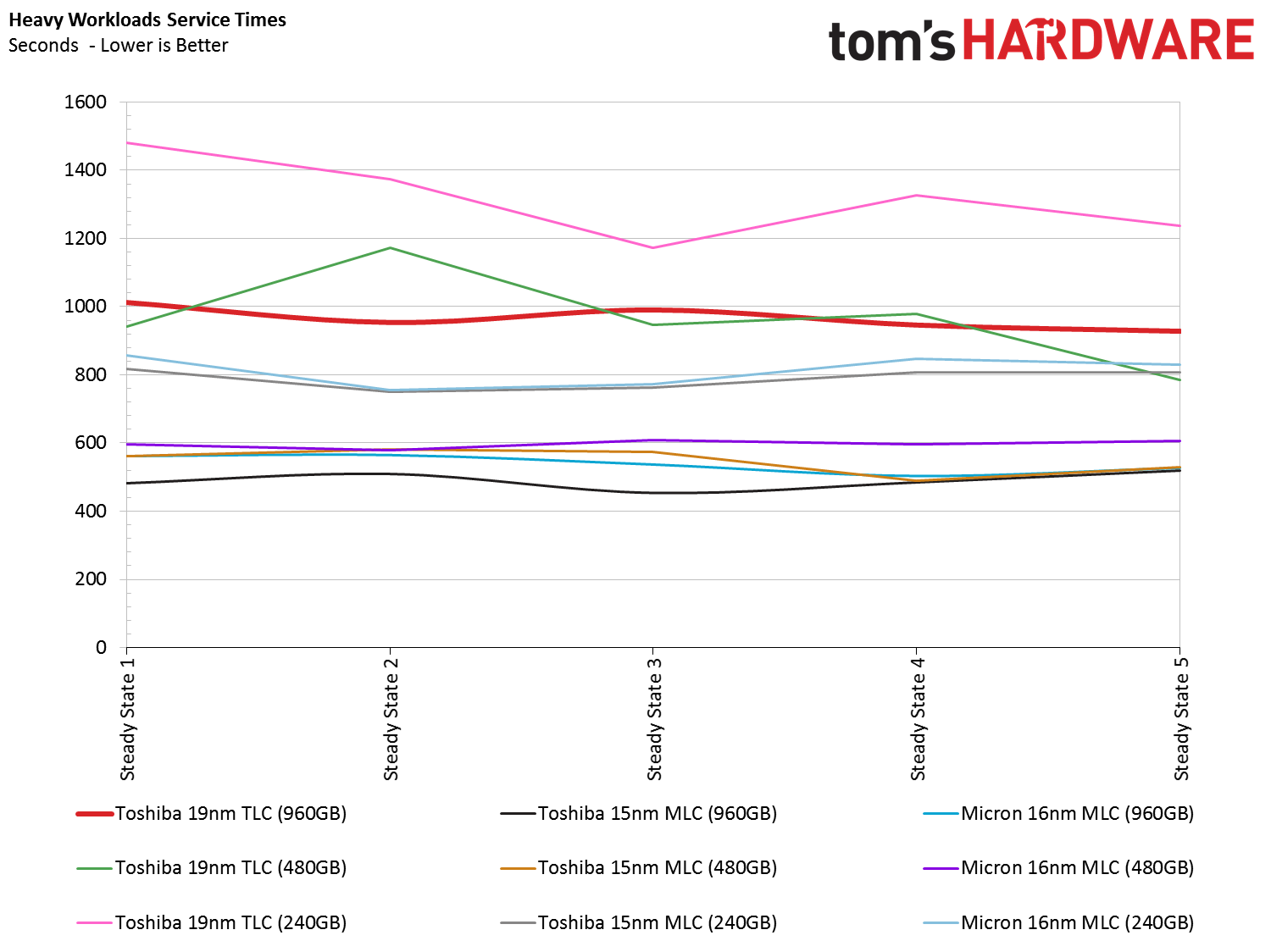Phison S10: Toshiba MLC And TLC Versus Micron L95B MLC
Phison offered to let us test its S10 controller with three flash types that will ship in 2015: Toshiba's A19 TLC, 15nm MLC and Micron L95B 16nm MLC.
Latency Tests



The latency charts show how heavy workloads can affect performance negatively. When it comes to latency, we're really talking about the user experience. The best SSDs deliver an instant response when you need it. Applications open as you release the mouse button from a double-click. On the other end of the spectrum, disk drives introduce a pause between your request and the time you see action.
Under heavy workloads, TLC yields performance in the middle of those two extremes. Under lighter workloads, TLC-based SSDs perform more like MLC-equipped drives thanks to the pSLC buffer that keeps performance high until the buffer is full.
Get Tom's Hardware's best news and in-depth reviews, straight to your inbox.
Current page: Latency Tests
Prev Page PCMark 8 Advanced Workload Performance Next Page Notebook Battery Life
Chris Ramseyer was a senior contributing editor for Tom's Hardware. He tested and reviewed consumer storage.
-
James Mason Replywhoa, where did you guys get some 4800GB just for the battery life tests?
Yeah so many typos I almost thought they actually did get 5 terabyte SSDs somehow.
-
Frozen Fractal I was arranging a chart while reading this article to see who actually wins. Seems like Toshiba 15nm MLC wins the test, with Micron 16nm MLC close on tail and TLCs wayyyy off :D.Reply
It is kinda disappointing to see TLCs being outperformed so brutally. I guess increased SLC buffer should mitigate the problem? Samsung already has like this in the EVO 2TB so what do you think Chris?
Also, does lithography has anything to do with performance? I mean Micron's NANDs are close to Toshiba's MLCs and Micron's cells are just 1nm bigger than Toshiba's MLCs. Can this be co-related somehow? -
WyomingKnott It is so cool that they provided these for a head-to-head comparison. Finally, a comparison with all other variables really held even.Reply